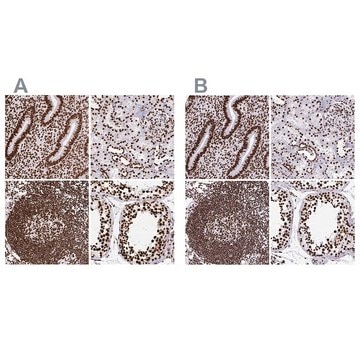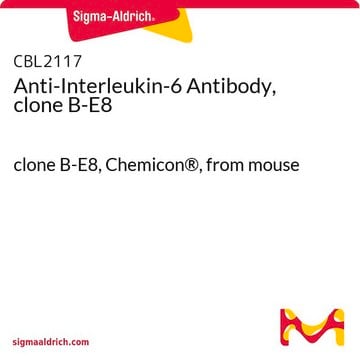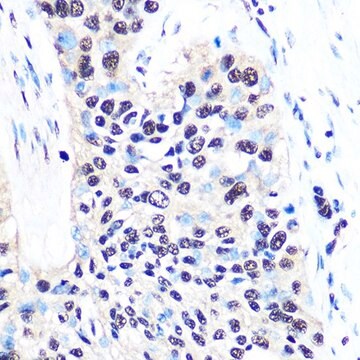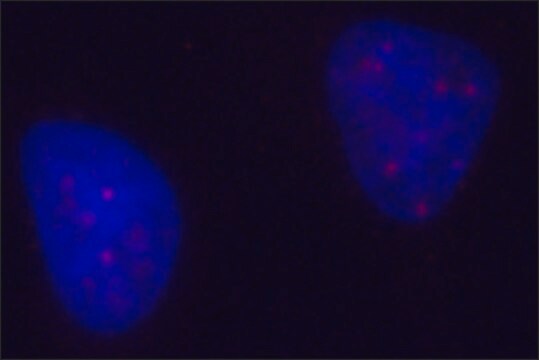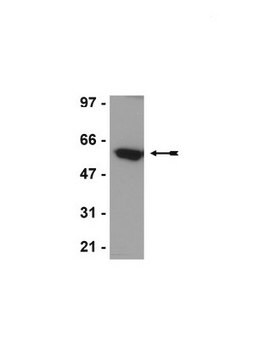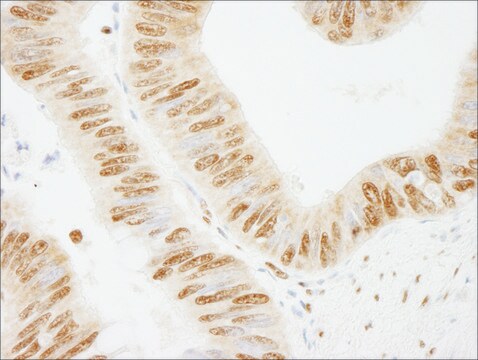詳細
Splicing factor proline and glutamine rich (SFPQ), also known as polypyrimidine tract-binding protein-associated-splicing factor (PSF), is a multifunctional nuclear protein. It is encoded by the gene mapped to human chromosome 1p34. The encoded protein is characterized with an N-terminal glycine rich domain, a proline/glutamine-rich domain (P/Q), two RNA recognition motifs (RRMs) and a C-terminal region with two nuclear localization signals.
Splicing factor, praline- and glutamine-rich (SFPQ), also known as PSF, is a member of the DBHS (Drosophila behaviour, human splicing) protein family, consisting also of PSPC1 (paraspeckle protein 1) and NONO (non-POU-domain-containing, octamer binding protein). The DBHS proteins localizes between the nucleoplasm, paraspeckles and the nucleolus. Monoclonal Anti-SFPQ (mouse IgG2a isotype) is derived from the hybridoma FC23 produced by the fusion of mouse myeloma cells and splenocytes from BALB/c mice immunized with a synthetic peptide corresponding to a sequence at the C-terminal region of mouse SFPQ, conjugated to keyhole limpet hemocyanin (KLH).
免疫原
Synthetic peptide corresponding to a sequence at the C-terminal region of mouse SFPQ, conjugated to KLH. The corresponding sequence is identical in rat and human.
アプリケーション
Monoclonal Anti-SFPQ antibody produced in mouse has been used in immunoblotting and immunofluorescence.
生物化学的/生理学的作用
Drosophila behaviour, human splicing (DBHS) proteins are involved in several biological processes such as regulation of circadian rhythm, carcinogenesis and cancer progression. SFPQ activates androgen receptor mediated transcription.
Splicing factor proline and glutamine rich (SFPQ) along with its binding partner non-POU domain-containing octamer-binding protein (NONO/p54nrb), plays a vital role in RNA processing, RNA splicing and transcriptional regulation. Additionally, these proteins also play a crucial role in various regulatory roles including, selective nuclear retention of defective mRNAs. SFPQ participates in transcription repression by recruiting transcription regulator proteins Sin3a and histone deacetylase (HDAC).
物理的形状
Solution in 0.01 M phosphate buffered saline, pH 7.4, containing 15 mM sodium azide.
免責事項
Unless otherwise stated in our catalog or other company documentation accompanying the product(s), our products are intended for research use only and are not to be used for any other purpose, which includes but is not limited to, unauthorized commercial uses, in vitro diagnostic uses, ex vivo or in vivo therapeutic uses or any type of consumption or application to humans or animals.
